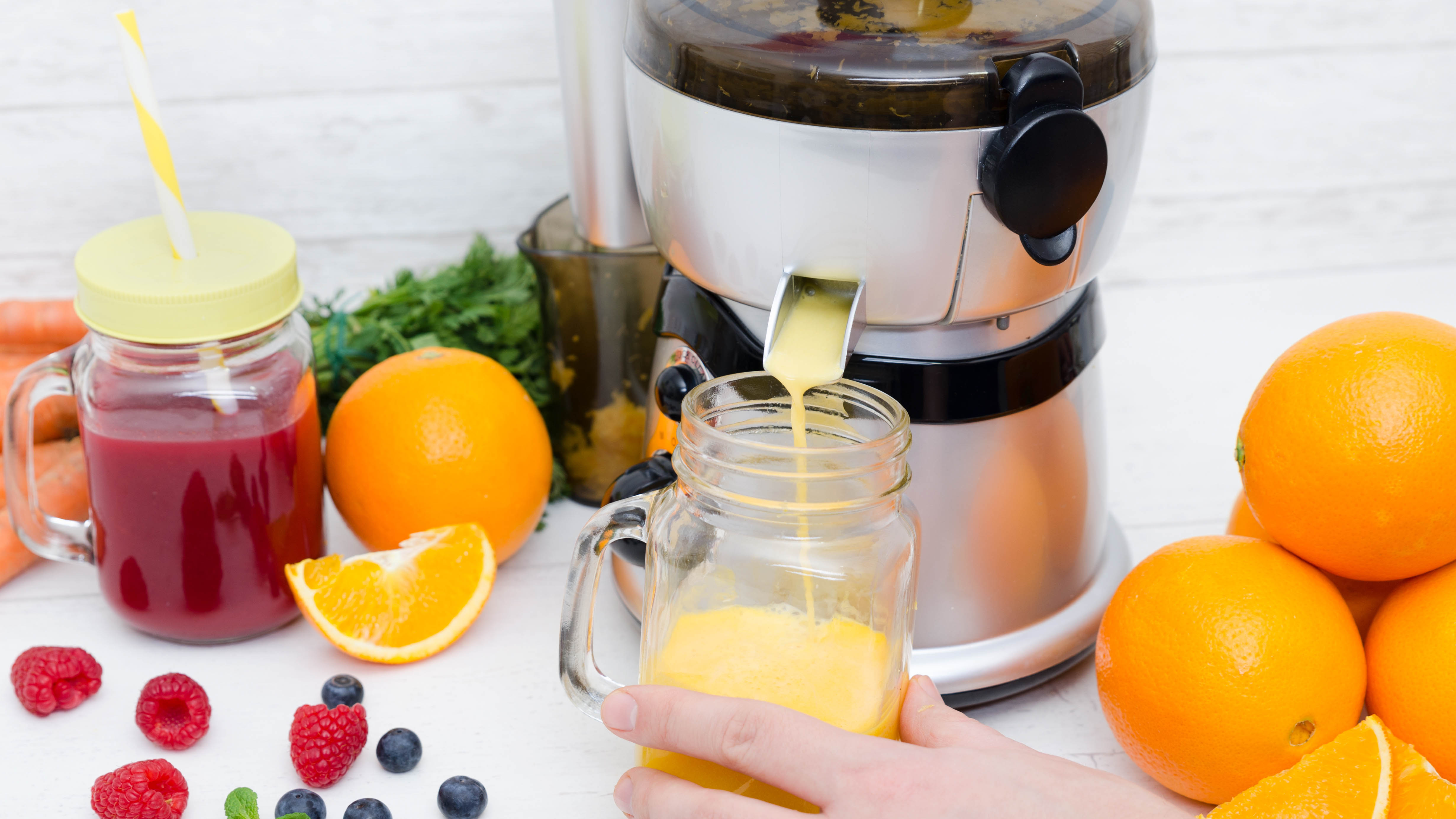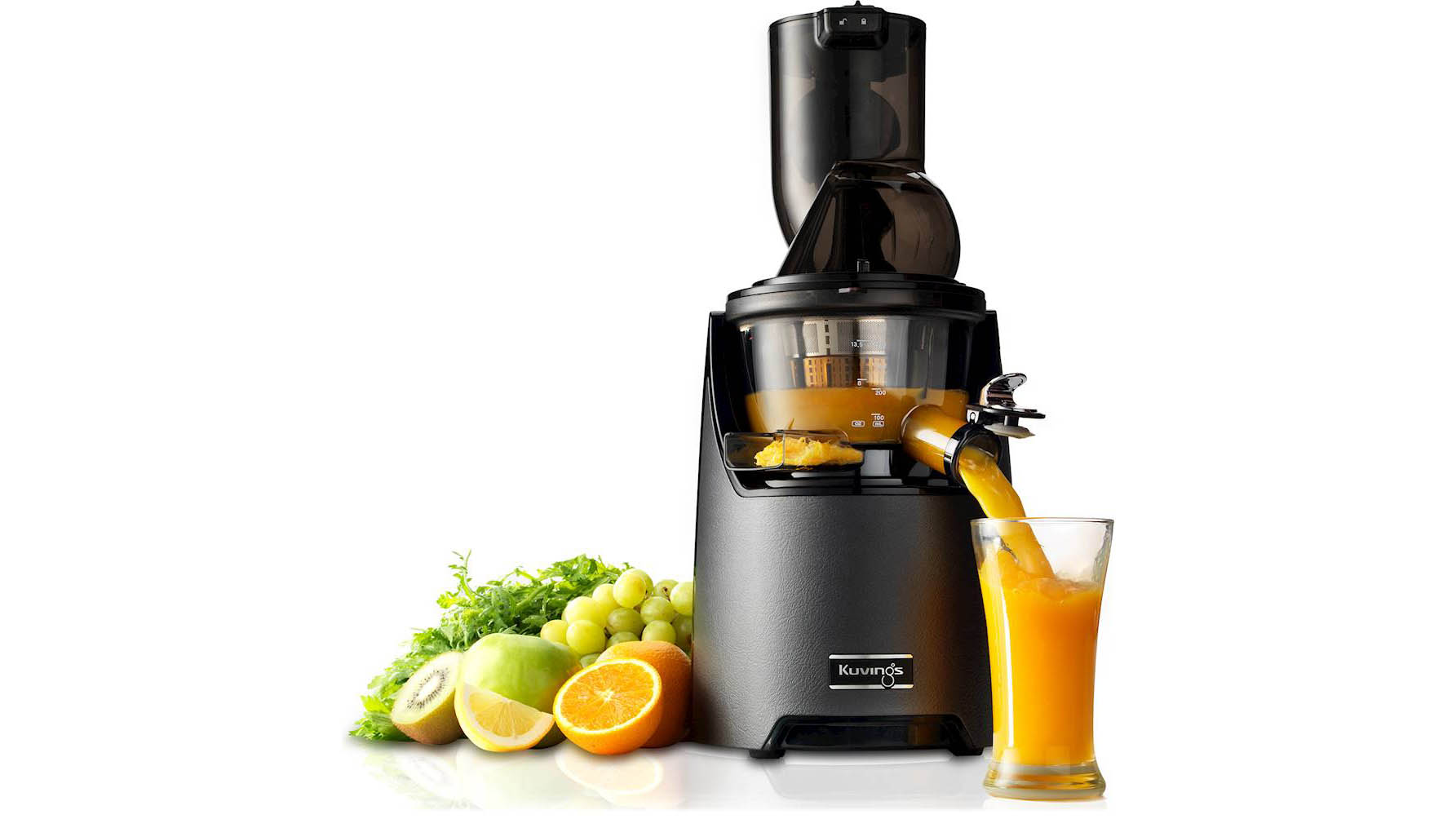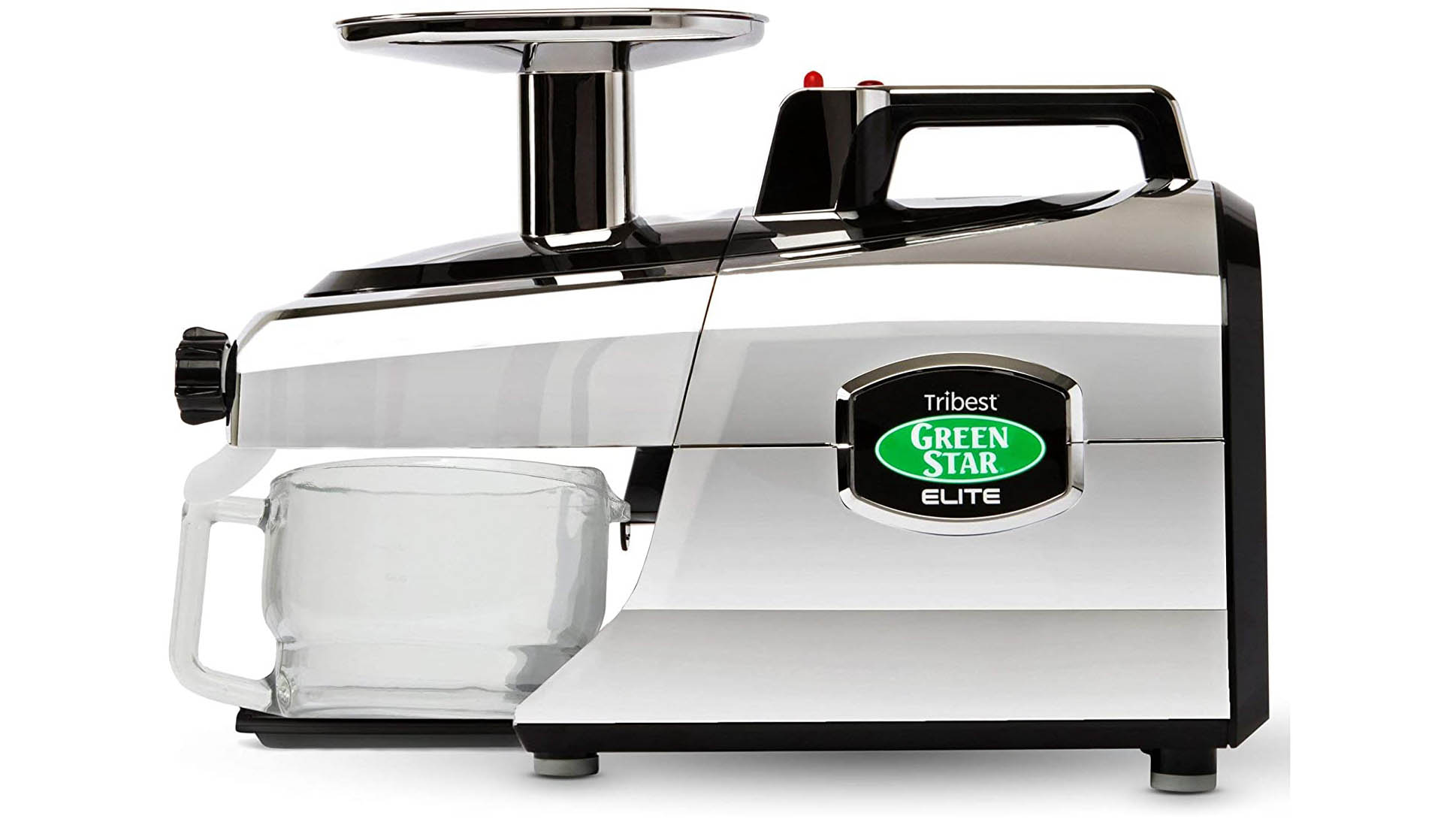Masticating vs centrifugal juicer: Which is best?
Juicers come in all shapes and sizes, but when it comes to masticating vs. centrifugal juicers, which kind is best?

Nothing beats the flavor of fresh juice, and if you’re looking to invest in a new juicer, you'll need to know the difference between masticating vs centrifugal designs. Juicers come in all shapes and sizes, but most will fall into one of these two categories. Depending on which you use, the process will vary resulting in a different quality of juice. But, what’s the difference between masticating vs centrifugal and which should you choose?
To help you decide, we look at the pros and cons of each process and consider the overall impact on your experience. With this, you can shop for some of the best juicers with confidence, knowing exactly what you need. And here are 7 top tips to get the most out of your juicer.
Masticating juicers

Masticating juicers are also known as slow juicers or cold-press juicers. These use an auger (picture a large corkscrew) to slowly ‘chew’ and crush the fruit and vegetables, and squeeze the results against a strainer to separate the juice from the pulp. It’s a slow process, operating at 40 to 100 rpm on average, but it produces a high quality of juice in terms of flavor and nutrition.
Less foaming and oxidation occurs using this method and it produces roughly 30% higher yield than centrifugal juicers. These juicers generally take more time and effort to use and they’re more expensive too — for this reason they’re best serious juicers and those who don’t mind waiting.
Reasons to buy a masticating juicer
- Works well on hard and soft fruit and vegetables, including leafy greens such as spinach or kale.
- As they’re slow to process, these juicers don’t heat up, so they better preserve nutrients including enzymes and antioxidants.
- Produces a higher quality of juice that's thicker, less foamy and has a more intense flavor.
- Produces a higher juice yield, so you get more out of your fruit and vegetables.
- The juice produced will last longer. It can take a few days for the juice to deteriorate from a masticating juicer, so you can make a batch and store it in the fridge for later.
- Horizontal designs are more versatile and can be used as a processor or grinder to make baby food, nut butters and even pasta.
- Because these are slow, they’re much quieter than centrifugal juicers as well, operating at a low hum.
Reasons to avoid a masticating juicer
- These are slow to operate and take much longer than centrifugal juicers. Masticating juicers can also only deal with one piece of fruit or vegetable at a time.
- The narrow chute means everything needs pre-cutting.
- Masticating juicers also tend to be more bulky and awkward to store, particularly if you opt for a horizontal design.
- These juicers come with more parts to clean, adding to the maintenance.
- Masticating juicers tend to be more expensive.
While pricey, the Omega J8006HDS Nutrition Center is one of the best masticating juicers around. Its slow speed — just 80 rpms — ensures that your juice won't heat up, and it's a champ with kale and leafy greens.
Get instant access to breaking news, the hottest reviews, great deals and helpful tips.
Centrifugal juicers

Centrifugal juicers, which are sometimes known as fast juicers, use a spinning blade to shred fruit and vegetables into pulp. Via centrifugal force, the juice is then pressed through a surrounding mesh screen and separated from the pulp. These are the most popular kind of juicer as they’re more affordable and convenient to use, producing juice much faster than other types of juicer.
However, this method induces oxidation as it operates at 10,000+ revolutions per minute. This means the resulting juice is more foamy and separates easily. For this reason, they’re not the best for producing a high quality juice. However, because of their lower cost and faster speeds, they’re ideal if you’re on a budget or want to drink juice on the go. Centrifugal juicers are a good option for beginners who are new to juicing as well.
Reasons to buy a centrifugal juicer
- Works well with hard fruits and vegetables, such as apples and carrots.
- Very convenient to use and quick to operate. Juicing can take less than a minute.
- Some come with larger chutes which can fit whole pieces of produce, such as apples or cucumbers. This means there’s less prep time.
- Tend to take up less countertop space. These are more lightweight as well, making them easy to move around.
- Easier to clean, as they come with less parts.
- The most affordable type of juicer.
Reasons to avoid a centrifugal juicer
- Doesn’t handle leafy greens as well and can also struggle with berries.
- Because of its speed, oxidation occurs, which causes more foam and ultimately a lower quality of juice.
- The oxidation also means the juice separates faster, so it needs to be consumed as soon as it’s produced and can’t be stored.
- Produce less juice yield vs masticating.
- The juice is also heated from the speed of the rotation, which again reduces its quality and any enzymes and vitamins will break down much faster.
- Some solids or pulp can also filter into the juice, including skins, seeds and stems.
- Because of the power, centrifugal is the most noisy juicer to operate.
Among centrifugal juicers, our favorite model is the Breville BJE200XL Juice Fountain Compact, which has a small footprint but a powerful motor and a fine mesh strain for filtering out particles.
Triturating juicers

Triturating juicers, also known as twin gear or horizontal juicers, are technically a type of masticating juicer, but come with two gears. The gears sit millimeters apart and counter-rotate so it can squeeze and crush the pulp simultaneously to get the best yield. These are slow operators, running at 60 to 120 rpm and come with similar pros and cons to single auger masticating juicers.
However, triturating juicers can process almost any fruit or vegetable you put in it. It will also produce the highest quality of juice which preserves its flavor and has a long shelf life. These machines don’t come cheap, and would be best for only the most serious of juicers.
Reasons to buy a triturating juicer
- Works with all kinds of fruit and vegetables and provides a consistent performance, even with leafy greens.
- Produces a very high quality juice as there’s no heat or oxidation. It appears more vibrant in color with minimal foam.
- Offers a high juice yield. Some models come with adjustable pressure, so you can get the highest yield possible.
- The juice will have a long shelf life, lasting a few days in the fridge before degrading.
- Its horizontal design also gives it more versatility as a processor and grinder. This type of juicer can grind seeds and nuts or even coffee beans.
- Triturating juicers are quiet operators too, humming as they process.
Reasons to avoid a triturating juicer
- Much like single auger masticating juicers, triturating juicers are slow to process and need everything pre-cut to fit down the chute. These ultimately take a lot of time and effort to use.
- The horizontal design can also take up a lot of countertop space.
- Triturating juicers are very heavy as well, so you wouldn’t want to lug it around often.
- More parts to clean compared to centrifugal juicers.
- The most expensive of juicer types you can buy, with some costing more than $1,000.
The Rolls Royce of juicers, the Tribest GSE-5050 Greenstar Elite, is a whopping $600, so you better really like juicing to pick up this model. Still, it's well made, with twin steel gears to get every last drop out of whatever you put in.
Masticating vs. centrifugal juicers: Which should you buy?
Ultimately, the type of juicer you purchase will depend on your needs and budget. If you're looking to make a quick drink before heading out for work or the gym, then a centrifugal juicer, with its faster speeds, may be your best option. They're generally smaller and cheaper, too.
If, however, you want to get as much juice out of fruits and vegetable as you can — and don't mind the wait or the higher cost — then a masticating or triturating juicer would better suit your purposes.
What should you look for when buying a juicer?
- Size - Depending on your household, always find a juicer with a capacity for your needs. This will also save you time, effort and money
- Power - Having a powerful motor will help juice your fresh ingredients consistently. Look for juicers with variable speeds, and a ‘pulse’ setting is ideal for tackling tough fruits or vegetables
- Noise - While powerful juicers are noisy, there are some models on the market that are quiet. Pay attention to the db (decibels) when buying a juicer to suit your home and lifestyle
- Easy to clean - Juicers can come with many parts, and it's useful to know how easy it is to clean. Is it dishwasher safe? Or are some parts hand-wash only? Buy one to suit your needs

As the Homes Content Editor, Cynthia Lawrence covers all things homes, interior decorating, and garden-related. She has a wealth of editorial experience testing the latest, ‘must-have’ home appliances, writing buying guides and the handy ‘how to’ features.
Her work has been published in various titles including, T3, Top Ten Reviews, Ideal Home, Real Homes, Livingetc. and House Beautiful, amongst many.
With a rather unhealthy obsession for all things homes and interiors, she also has an interior design blog for style inspiration and savvy storage solutions (get rid of that clutter!). When she’s not testing cool products, she’ll be searching online for more decor ideas to spruce up her family home or looking for a great bargain!
